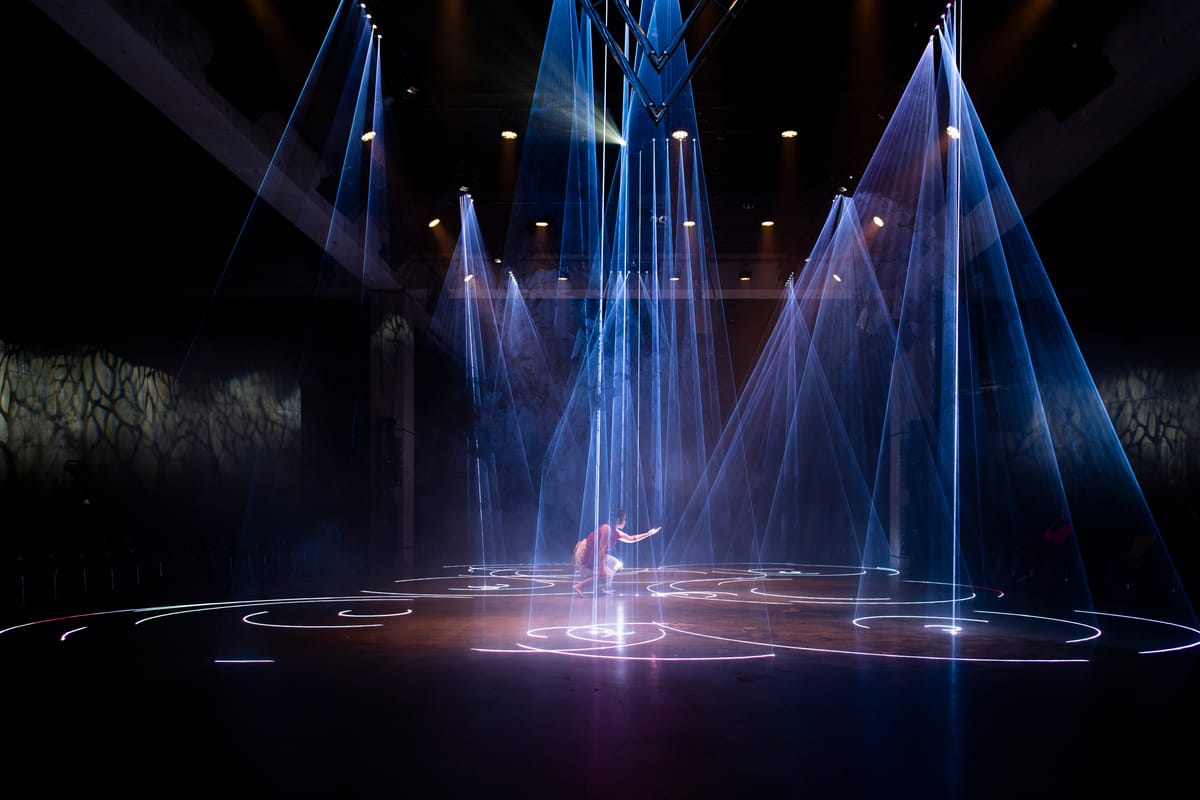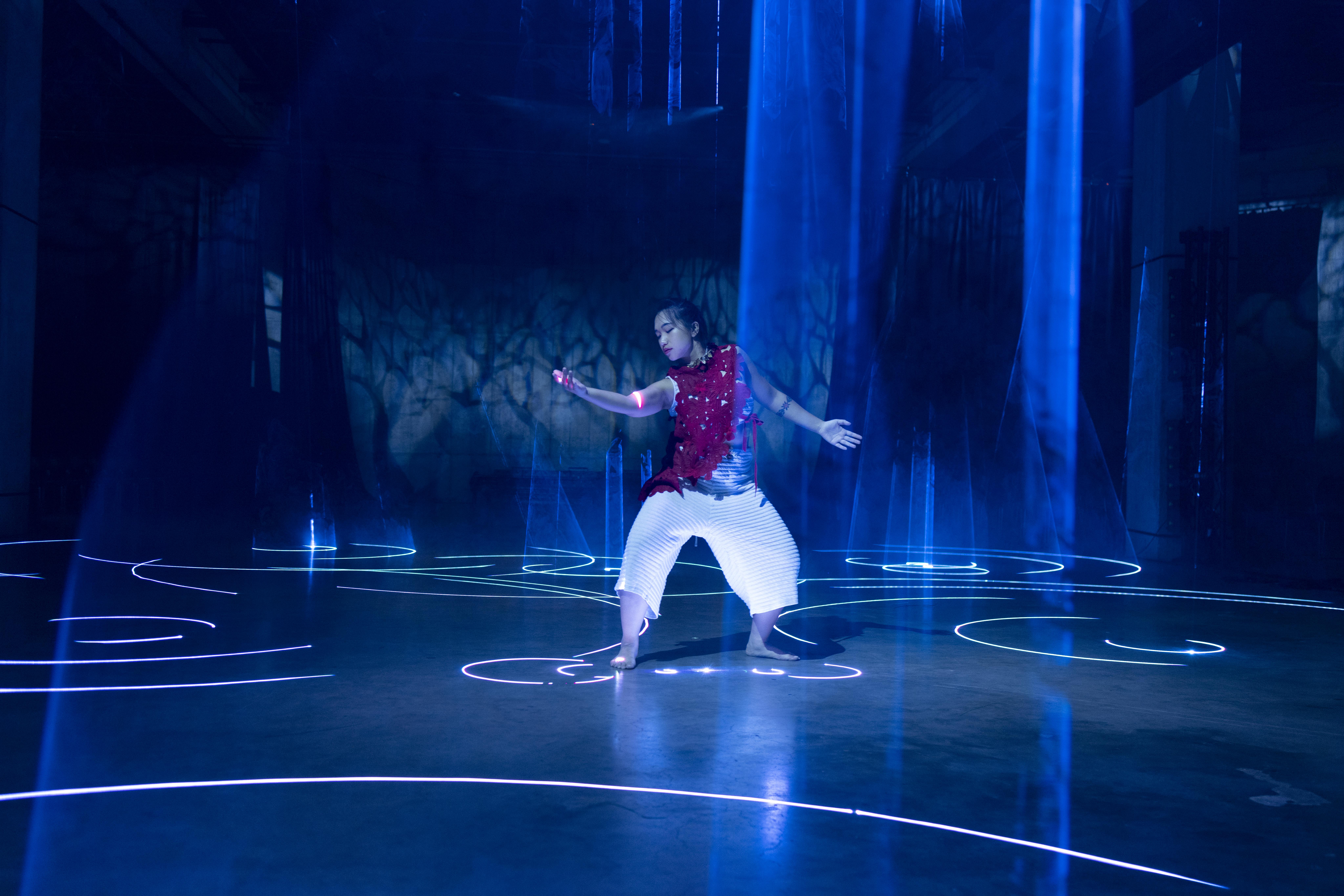Shows
Dondon Hounwn and Shu Lea Cheang’s “Hagay Dreaming”

Dondon Hounwn and Shu Lea Cheang
Hagay Dreaming
Tate Modern
London
Mar 13–15, 2025
Conceived by artist and shaman Dondon Hounwn, the performance Hagay Dreaming (2020– ) is centered on a hunter who, upon falling asleep in a mountain forest, encounters gender-fluid spirits called Hagay drawn from Indigenous Taiwanese legend. Through dance and song, the Hagay share instructions on how to live harmoniously with nature and community. The performance’s first 90-minute-long, theatrical staging took place at Tate Modern in London with an adapted script as well as ingenious lighting and video effects by the nomadic new-media artist Shu Lea Cheang, who represented her native Taiwan at the 2019 Venice Biennale.
Hagay Dreaming is informed by Hounwn’s experiences as a queer, Indigenous Truku person (from what is now Taiwan). He fabricated this myth to bypass his elders’ resistance to contemporary lenses on issues such as gender diversity, and to reconnect his tribe with their ancient Gaya cosmology and life-code, which views all beings as one. Far from being a feel-good romanticization of Indigeneity, then, Hagay Dreaming is a powerful reminder that reconciliation—of the spiritual with the earthly, of one perspective with another—requires continual honing.

The performance began in the Tate Modern Turbine Hall with a ritual led by Hounwn, accompanied by three other participants. Lighting incense, waving miscanthus grass, ringing bells, and singing, they evoked the primacy of tradition. But that view was quickly dispelled. Following the performers into the cavernous subterranean South Tank space, audience members were greeted by the sight of Temu Masin, playing a younger Hounwn, bound in a rope cocoon. As Hounwn unraveled the cords, Masin began to spit, utilizing a camera as his focal point. His gaze, at once knowing and seductive, reflecting the way we unabashedly stare into cameras in the social-media age. Likewise blending old and new, the music transitioned from the plucky sounds of mouth harps to thumping bass reverberations as Masin, now free, began to dance with supple power.
The pace dramatically slowed as a divine messenger in priestly garb sang an elegiac tune. Masin reappeared with a white shawl around his shoulders, which he moved like a pair of wings. Projections of white butterflies adorned the walls. For Hounwn, the butterfly is a sign from spirits warning of imminent danger. A photo-montage on the screen showed the threats that his people face, including the government’s destruction of sacred trees and streams. The Truku have protested these intrusions, extending the practice of Gaya into community resistance against bureaucratic oppression.

Next came the segment most overtly rooted in Hounwn’s personal past. Masin strutted down the stage in red heels, lipstick in one hand and phone in the other. A pre-recorded video selfie was projected behind him, showing him defiantly painting his lips, while a voiceover describes his father scolding him for wearing earrings like a girl.
Cheang’s masterful stagecraft came into its own in the final acts. As the hunter, Sinkuy Katadrepan moved jubilantly through blue light that cascaded from the ceiling before merging into ripples on the floor. Fashion designer Shao Yen Chen’s costumes were not to be overlooked either. When the three Hagay danced sensually under the same simulated rainfall, their diaphanous white tunics clung to their bodies, appearing wet. The Hagay then imparted weaving lessons by plucking at red laser beams, following their lengths across the stage as if the streams of light were threads on a loom. At times, they let the light coalesce on their skin, their translucent costumes facilitating the illusion that their bodies were emitting light.

Another stunning sequence featured Masin and the hunter. Under the same white cape, they strode away from each other, stretching the fabric, on which videos of their earlier movements were projection-mapped. This is perhaps the most complex lesson from the Hagay—the oneness of all life, past and present.
For all its riveting music and clever technology-augmented choreography, this enactment of Hagay Dreaming left viewers desiring something intangible, unspecifiable. Perhaps that is the point. Hounwn and Cheang invited audiences into the enchanting vision of Gaya, prompting reflections on how we might bring the dream to life.
Chloe Chu is a London-based editor and writer invested in decolonial art practices. She is a former managing editor of ArtAsiaPacific.







